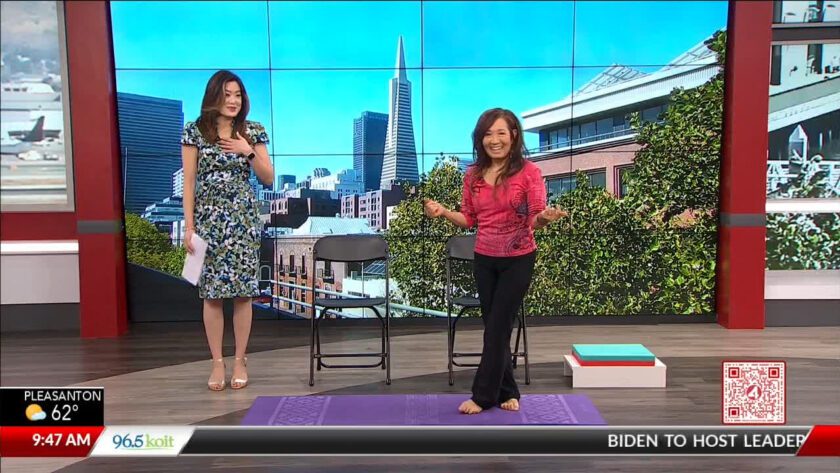Since returning to broadcasting live from the studio, I’ve been promoting healthy aging by demonstrating how to predict longevity with various function tests. In this segment, I introduced the Sitting-Rising Test that you can perform at home to determine life expectancy.
What’s the Sitting-Rising Test (SRT)?
The SRT is a clinical test developed by Brazilian researchers in exercise and sports medicine in the 1990’s. The test was designed to be a simple and safe tool to measure non-aerobic components of physical fitness, which include:
- Muscle strength/power
- Flexibility
- Balance
- Body composition
These fitness components provide a significant prediction of mortality risk in the elderly. Subjects in this study were men and women aged 6 to 99 years old from very healthy (e.g., Olympic and World Class athletes) to extremely sick (e.g., patients with severe heart failure).
Other Factors That Influence SRT Performance
- Body weight
- Joint mobility
If you have muscle or joint weaknesses in the back, hip, knee, or ankle that have affected your stability and/or mobility, then have someone assist you with the test or do one of the modifications as explained in the video.
Here’s How to Score Yourself
The ability of sitting and rising from the floor is measured according to:
- The number of supports you need to perform each of the movements
- The presence or absence of instability when sitting and rising.
You start with a score of 10 (5 for the sitting portion, 5 for the standing portion). You subtract points for the following:
- Hand used for support: -1 point
- Knee used for support: -1 point
- Forearm used for support: -1 point
- One hand on knee or thigh: -1 point
- Side of leg used for support: -1 point
- Instability / lose balance: -0.5 point
A Score of 10
- A score of 10 is most frequently seen in men aged 16 to 25 years old and women aged 16 to 40 years old.
- Less than 8% of men/women age older than 55 years of age achieve a 10.
Scoring
GOOD: 8-10 points means you’re doing well. Your overall fitness and balance are good and you have the greatest life expectancy.
FAIR: 3.5 – 7.5 points is a problem. Your fitness and balance are weak and you’re twice as likely to die in the next six years as people who scored in the good range.
POOR: 0-3 points should be a loud warning. Your fitness level is low, and you are five times as likely to die in the next six years compared to people who scored in the good range.
![]() Karen’s Fit Tip: Remember, this test is just an indicator. The point of this test is to measure your overall health when fundamental movements put stress on the body. There are several factors that can affect your score. By adopting healthy habits for longevity, you can improve your score and lengthen your life. Every additional point increase cuts your risk of death by 21% from all causes.
Karen’s Fit Tip: Remember, this test is just an indicator. The point of this test is to measure your overall health when fundamental movements put stress on the body. There are several factors that can affect your score. By adopting healthy habits for longevity, you can improve your score and lengthen your life. Every additional point increase cuts your risk of death by 21% from all causes.

